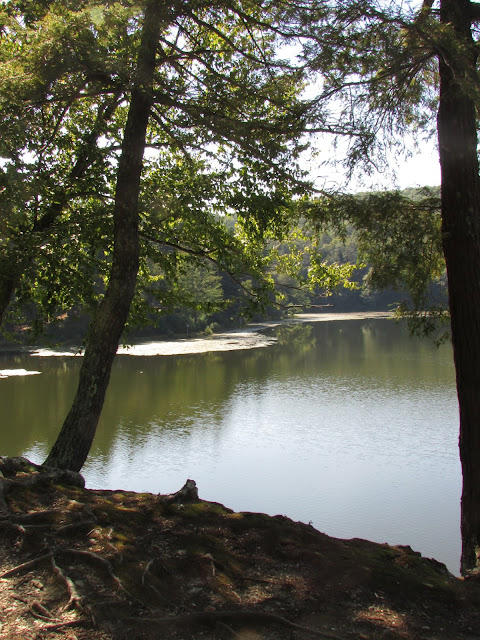In September my good gardening friend, Emma, and I visited Innisfree garden in Millbrook, New York. The weather was perfect and the garden was quiet. Built around a lake, a lovely path winds along the shore where you encounter beautiful scenes, perfectly laid out, wild in feeling, but manicured and exact. The garden was designed and built by a couple, Walter Beck and Marion Burk Beck. Walter was inspired by Japanese and Chinese art and aesthetic, in particular an 8th century Chinese artist, poet, and gardener named Wang Wei. He championed ideas about thoughtfully designed garden vignettes within a larger landscape. Walter Beck called this concept 'cup gardens.' In 1938 the couple teamed up with Lester Collins, a budding landscape architect at Harvard, who worked with the Becks to connect the series of smaller garden compositions into the larger landscape.
"Western gardens are usually designed to embrace a view of the whole.
Little is hidden. The garden, like a stage set, is there in its
entirety, its overall design revealed in a glance. The traditional
Chinese garden is usually designed so that a view of the whole is
impossible. [It] requires a stroll over serpentine, seemingly aimless
arteries. The observer walks into a series of episodes, like Alice
through the looking glass."
Lester Collins, Innisfree: An American Garden (1994)
Lester Collins, Innisfree: An American Garden (1994)
One side of the garden felt like a beautifully maintained trail or park, and that was where we started, and then we began to come across these "three dimensional pictures," of intentional scenes. The further we went, the more ornate the scenes became, with more structure, stone work and more cultivated plantings.
A stand of Lotus nucifera along the shore. This felt down-right exotic to me!
There was lots of stone work and little scenes tucked into hillsides.
Along with ancient Chinese thoughts and practices, the garden also embodied Modernist ideas. This geometric stone pillar sat in the middle of a wide lawn, continually spraying water. In the spirit of wandering through a landscape Alice-in-Wonderland-style and encountering "episodes," coming across this fountain fit the bill.
There was never a house built on the site, but there was lots of stone work, patios and terraces giving the garden a feeling of having been lived in. I think foundation gardens, whether real or imagined, are always interesting; it illustrates the juxtaposition between man and nature (and in someways house and garden), the garden will always win in the end!
To read more about Innisfree or to plan a visit, check out their website here!

















